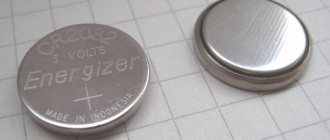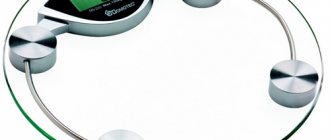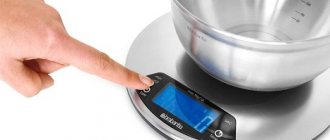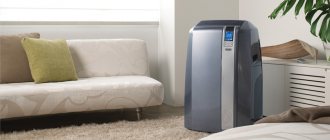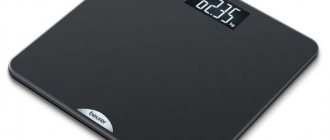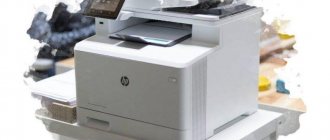Advantages and disadvantages
Mechanical devices are necessary to control body weight. They show the correspondence of weight to height and age - the state of human health.
Advantages of mechanical floor scales:
- the cost is low;
- strength;
- no special storage conditions required;
- understandable to anyone;
- operation does not depend on electricity or batteries;
- easy to use;
- long service life.
Disadvantages of mechanical floor scales:
- error;
- no additional features;
- limiting the weight of the person being weighed.
Installation of mechanical floor scales
Mechanical scales are a device consisting of a platform and a housing. The top is equipped with a scale protected by a plastic or glass coating.
The movable platform consists of four fixed legs, four metal arms connected in pairs, a horizontal plate, a spring and a rocker. The rocker arm connects to the pointer, monitors the tension of the spring, and changes the position of the pointer.
The basis of the design is represented by a measuring spring, which stretches during weighing. The spring is a measuring element. The sensing element is attached to a horizontal plate.
When a weight (an object, a person) acts on the scale platform, the spring moves down. The stretching changes the value of the hand on the dial.
Mechanical scales are easy to use. To begin with, it is installed on a flat, level, hard surface. This eliminates the error that will occur when installing the scales on a carpet or soft surface.
If it is necessary to carry out regular weighings with recording of exact changes in body weight, the device is installed in the same place, since when moving there is a risk of being placed on an uneven surface.
The scale control is adjusted to zero. To ensure that the hand is positioned correctly, look for the colored or bold mark on the dial indicating the start of the calculation.
Be careful when standing on the device. First, place one foot, make sure that it is standing steadily and does not wobble. Then move the other leg.
To accurately determine body weight, it is recommended to weigh yourself at the same time of day, remove shoes and clothes. The procedure is carried out 2 hours after waking up. If you weigh yourself after a meal, the readings will not be accurate, so it is better to carry out the procedure before a meal or after a few hours.
How to disassemble and repair floor mechanical scales
We also recommend that you familiarize yourself with the reasons for displaying incorrect weight on electronic bathroom scales.
- When standing on a scale, a person presses on levers that intersect with each other. They distribute the load evenly;
- two long arms are connected to a platform, which is combined with a simple but precise spring. The latter stretches in a ratio of 12:1. Two additional levers are attached to the main ones for proper load distribution;
- the spring of the device begins to stretch under pressure;
- the platform, which is connected to the main spring, acts on an additional spring connected to a gear that rotates the arrow;
- the arrow rotates along the measuring scale.
Important! Mechanical scales, unlike electronic ones, can be adjusted: using a special wheel, the needle is set to zero.
There can be many reasons why mechanical floor appliances may require repair. Among the most common are:
- The device shows inaccurate values. To eliminate this problem, you do not need to disassemble the device; just adjust it using a gear.
- If the setting does not help, then there is a problem with the mechanism.
To understand how to disassemble a mechanical floor scale, turn the device over and find two small springs that are located on the sides parallel to each other. They come off quite easily. To do this you will need a screwdriver or a knife. Using a sharp edge, you need to pry one side of the spring and lift it; it can easily be detached from the body. Then, using pliers, it must be moved to the side so that the edge of the spring does not touch the body. The same manipulation must be done with another spring. Then you need to carefully remove the bottom cover.
Important! You must remove the cover carefully, since the device mechanism is attached to it.
First you need to check the correct location of the four guides, check how well their grooves fit into the corresponding recesses located in the corners of the case. Only after this you need to tilt them and inspect the connection with the main spring. A common cause of failure of mechanical floor scales is the slippage of two additional guides connected to the main ones. This type of damage occurs due to an impact or fall. Just put the guides in place and the device will work.
If the main guides and additional ones are in place and there are no visible causes of failure in the connecting sections, you need to check the additional spring. A sign of its malfunction is the immobility of the arrow while pressing on the main and additional guides. Causes of malfunction:
- the main guides have become detached from the platform;
- The additional spring is not attached to the gear.
To fix this problem yourself, you need to disconnect the disk with the scale. Depending on the model, it can be attached with a bolt or screw. After removing the disk, all connections are checked. If there is a breakdown, it is repaired.
Another common reason is that debris gets inside the device or the mechanisms are damaged by rust. In this case, mechanical products usually show incorrect values and stop at any of the scale readings. This problem is often encountered by those who store scales in the bathroom. The device is negatively affected by temperature changes and humidity.
To repair this malfunction, just open the case and use a brush to clean all springs and connections from dust and rust.
Then you will need to lubricate all connections with oil. It is better to use regular sewing machine oil. This not only removes rust and dust, but also prolongs the operation of all mechanisms and springs.
It is immediately worth noting that in those places where there is rust, cleaning must be carried out very carefully, since rust negatively affects all metal parts, and if it is not removed, it will continue its destructive effect.
After thorough cleaning and lubrication, you need to press the guides several times so that the oil penetrates all parts of the springs and mechanisms. After this, the scale is installed and the correct operation of the scale is checked. To do this, use an adjustable roller to set the needle to zero and assemble the device. To do this, you will need a fishing line so that the springs that hold the body are pulled out of the holes and pressed against the lower part. When the body is assembled, for example, a weight or other object whose weight is known is placed on the scales. If the device shows an accurate value, then the repair was successful.
Types of mechanical floor scales
Household
The most common type for home use. Easy to use. It is enough to install them correctly and you can start weighing. Affordable, strong, durable. When choosing this unit, check it for errors. To do this, you need to weigh an object whose mass is precisely determined, for example a package of salt. Various models show from 100 to 500 grams.
Medical
Mechanical scales are used to determine the weight of sick people and patients undergoing rehabilitation.
Weighing is carried out on two scales that need to be configured. When weighing, a lock (special lever) releases the rocker arm (a part of the lever mechanism).
By moving the weight along one scale it is necessary to achieve an equal level. Once this is done, the exact same process is repeated for the exact scale. The values are read from both scales of floor mechanical scales and summed up.
This scale is not intended for home use. Since the dimensions are large, and the unpresentable appearance is unlikely to suit the design of the house. There are floor-mounted options with a height gauge. With them it is convenient to immediately calculate the correspondence of height and weight.
Trading
Similar to medical scales, but more accurate. A distinctive feature is the increased platform area. Its surface is made of durable steel and is very smooth.
Industrial
They are even larger in size. Measure from hundreds of kilograms to hundreds of tons.
Location of industrial models:
- factory;
- customs;
- transport control point;
- stock.
Operating principle [edit | edit code ]
Lever scales [ edit | edit code ]
Lever scales are scales in which the transmission device is a lever or a system of levers.
Equal scales [edit | edit code ]
Libra [edit | edit code ]
In equal-arm lever scales, the weight suspension points (m1 and m2) and the fulcrum point form an isosceles triangle (yoke) with a height h and a vertex at the fulcrum. When an isosceles triangle (yoke) is rotated through an angle α, one arm increases and the other decreases. The rotation of the rocker stops when the torques are equal: m1*l1=m2*l2, m1/m2=l2/l1, where l1 and l2 are the torque arms. The angle of rotation of the rocker arm can be calibrated in units of mass (quantity). The smaller the height of the triangle - h, the smaller the change in the arms when turning and the greater the sensitivity of the scales. Such a device corresponds to a state of stable equilibrium.
Read also: How to polish a stainless pipe
Equilibrium [edit | edit code ]
At zero height of the triangle h=0 (as it is sometimes drawn in some articles), the rocker arm turns from a triangle into a straight line. When turning a straight rocker, the length of the arms changes equally, the ratio l1/l2 does not change and equilibrium is not established. Such a device corresponds to a state of indifferent equilibrium. When weighing on an equilibration system, there is no stable equilibrium position and equilibrium is determined by the indifferent position of the rocker arm when manually deflecting to the left and right.
Comparator [edit | edit code ]
If the support point is below the suspension points, then such a device works as a comparator or trigger, that is, it determines only which of the two masses is greater and which is less (quality). Such a device corresponds to a state of unstable equilibrium.
Different-shouldered scales [edit | edit code ]
The equilibrium conditions are completely different from those in equal-arm balances. Single-weight multi-arm scales, shown in the figure on the right, reduce the number of weights (weights) and the likelihood of their loss, that is, they have increased reliability, but have a greatly reduced range of weighed loads. The scale of the weights is non-linear, compressed at the edges of the weight range and stretched in the middle of the weight range.
Smart scales [edit | edit code ]
Smart scales are a device that can determine a number of physiological indicators of the body by transmitting data to a smartphone.
Criteria for smart scales]:
- determine not only weight, but also other body parameters (BMI, percentage of fat, bone, muscle tissue, etc.);
- synchronized with a smartphone;
- differentiate between users.
Some models of smart scales are equipped not only with sensors for the body, but also with environmental sensors, such as temperature and air quality (CO2 content). Also, there are scales with calorie counting, inside of which there is a nutritional guide, each index (food product) is indicated content of proteins, fats, carbohydrates. [5]
How to choose a mechanical bathroom scale
Load
The choice of scales is determined by the intended weight of the measurement. The device for home use determines weight from 1 to 150 kilograms. The maximum figure reaches 250 kg.
Weight
Depending on the size of the platform, material, type of dial, as well as the presence of additional accessories, the weight of the scale changes. Compact scales weigh about a kilogram. A more massive device - 2 kg +/-0.5 kg.
Scale feet
The bottom of the device is equipped with legs, usually four of them. Serves as a support. The material used to make the legs is plastic or metal. Sometimes they are rubberized, which provides additional protection against slipping.
Division
The markings of most models are calculated in one kilogram; there are scales with marks of 0.5 kg.
LCD screen
Some models have an electronic display, but the mechanism of action is the same spring. The deviation is measured by a special sensor.
The accuracy of this is established during production, reaching an error value of ten or one hundred fractions of a kilogram. The readings are much easier to read.
Material
The weight of the scale, appearance, and service life depend on the composition of the case.
If the body is made of metal, it is more durable and resistant to mechanical stress. The cost will become much higher.
Plastic ones are characterized by a long service life if the plastic is of high quality. But the composition of the case will not provide protection from damage due to falls or impacts. And low-quality ones break under a person being weighed.
Availability of a rug
Some models are equipped with a corrugated pad, which prevents the person from slipping when weighing.
Sight glass material
There are two types of display coating - glass or plastic. The plastic is susceptible to clouding and scratches. Over time, the appearance will deteriorate and it will be difficult to look at the scale. Tempered glass stays clear longer.
Dimensions
The model range is represented by scales with different digit sizes. If you have vision problems, choose a large dial with large numbers. Better with red marks.
Additional equipment
A height and weight chart helps determine fitness levels. Using special marks (colored markers), the previous weighing result is saved or the current weight value is recorded. The function is convenient when comparing body weight indicators.
Design
The standard shapes are circle and square. There are also oval, rectangular and triangular. A wide palette of colors is possible.
Repair of electronic scales
Electronics require a precise approach. The repair process must take place in strict accordance with the rules, one at a time.
The operating principle of electronic scales is based on the functioning of voltage sensors, thanks to which the device’s readings are displayed on a liquid crystal display. Depending on the model, the device can be turned on automatically when exposed to a load or by pressing a button.
Note! Electronic scales may have a weighing error of 100–500 grams. It is also important to take into account the maximum load of the device, which ranges from 100 to 220 kg for different scale models.
Elements that make up electronic floor scales:
- display;
- strain gauges;
- electronic printed circuit board;
- buttons.
Preparatory work
First of all, you need to determine what the problem is. Defect identification includes:
- checking batteries;
- inspection of appearance;
- checking all electrical contacts;
- checking the condition of scale parts.
Let's take a closer look at them.
Checking the batteries
The scale may not display numbers clearly or may not turn on at all. This is a reason to check the state of the power supply. The process is quite simple: take out the battery and check it with a tester. If this device is not available, you can do it even simpler: place the battery in any other device with the same type of power. If it does not turn on, then the problem may be in the battery, and most likely it will be enough to replace it. Otherwise, you need to look for other reasons.
The tester will help you determine if the battery needs to be replaced
When conducting such a check, consider two important factors. Just because a battery works in another device does not always mean that it will give the same result in a scale. The battery’s contacts could also have oxidized. The reason for this could be a violation of storage rules, for example, at high humidity. Try wiping the battery contacts with a flannel cloth, it is quite possible that it will work again. But still, the most reliable way would be to check with a tester.
Inspection of appearance
Carefully inspect the scale from all sides for any changes that have occurred in it compared to its normal state. This could be deformation of a part, a crack, melting or charring. Each such defect indicates where the fault is located.
First of all, carefully inspect the scale for external damage.
Checking all electrical contacts
Perhaps this check will help you repair the device right away. If you find a torn or detached wire, just solder it in place. The same must be done if the track on the board is damaged.
Check if the wires on the electronic board are securely fastened
This is done as follows. Take fine sandpaper and clean the damaged area with it, then degrease it, wipe it with white spirit or another solvent and sand it. Create a jumper over the defect or solder a large layer of tin. When the solder has cooled, coat it with varnish. You can use regular nail polish.
Checking parts and their condition
If the previous manipulations did not reveal the problem, you need to check the condition of the scale parts. Approach this with extreme care. You will need precision tools: an angle, a caliper and a level. Look carefully to see if the internal frame is deformed and what condition each part is in. This way you can detect hidden defects.
Repair work
Having determined the type of malfunction, prepare the tools that will be needed for repair:
- pliers;
- screwdrivers;
- soldering iron;
- tester.
You will also need a clean rag to wipe away dust and dirt. If it is necessary to restore the tracks on the board, you may need a solvent, varnish and sandpaper.
Elimination of mechanical defects
Device malfunction can be caused by exposure to a mass exceeding the maximum permissible. The load cells are located at the corners of the inner frame, which bends under too much weight.
You can determine the presence of such deformation using a level or measure it with a caliper. Fixing the problem is not difficult: just straighten the frame at the bend. This can be done by gently tapping the deformed areas of the frame with a hammer, constantly measuring the result with a level. Thus, the functional balance of the sensors will return to normal, and the functionality of the device will return.
Note! It is recommended to remove the frame from the scale before alignment.
Loop repair
Electronic scales may stop displaying numbers if the contact of the cable with other parts weakens. Disassemble the scales, carefully inspect the cable - a set of wires collected in a ribbon connecting the display and the printed circuit board to each other. If the cable contacts are loosened, the display does not receive power, which is why the characters on it are not visible. You need to ensure a tighter connection of the contacts in the cable to the board. Lift it slightly and press it against the display with a suitable size block, ensuring permanent fixation. Such a block can be cut from a piece of wood or take a regular office eraser. The block will tightly fix the board, restoring contact, and the device will function again.
If a damaged wire is found in the cable, solder it at the break site.
Display damage can also be detected by other symptoms. Are there any visible stains, smudges, or air bubbles on it? This is a clear sign that the problem is not with the wires, contacts or cable. When my scales had this problem, I had to take them to the workshop. The display was replaced: the failure was in its matrix, the ink simply spread over the internal surfaces. This problem cannot be fixed at home with your own hands.
Video: soldering a cable in an electric scale
Problems with strain gauges
Another necessary part of electronic scales is strain gauges. They are responsible for converting the load level into a signal, which becomes the image of numbers on the display after processing by the electronic board.
This is what a strain gauge looks like
The scales contain 4 such sensors: they are built into each leg at the corners of the scales. Mechanical impact does not destroy them, but the wiring coming out of the sensor may break. They need to be soldered, but this can be difficult to do. The problem is that the sensor is very small and housed in a rugged housing.
The performance of strain gauges can be determined using a tester. To do this, unsolder all sensors from the board and measure their resistance. Without load on the scale, the resistance of all load cells will be approximately the same. A larger deviation in resistance values will indicate a malfunction of any of the sensors.
Schematic diagram of bridge resistance measurement of strain gauges
The sensor itself may fail, but this happens very rarely. This malfunction can be determined by ringing the part with a tester. If the result is negative, then the sensor is replaced with a new, serviceable one. This task can be difficult, since the part is filled with a compound - a special glue. If you manage to find strain gauges in an electrical store, take 4 of them at once and install them in place of the old ones. You can also replace the damaged sensor with a part with similar resistance values from an identical scale model.
If you are unable to find a new sensor, try carefully picking out the compound. Inside you will see a copper plate with three soldered wires. If one of them is broken, just solder it back in place. Usually this is enough to restore the scales to functionality.
Calibration of electronic scales
The accuracy of their readings directly depends on how well the scales are calibrated. Violation of calibration does not affect the performance of the device, but the scales will not be able to display the measured mass correctly.
Restoring calibration is carried out as follows.
- Place a certain weight on the scale platform - any thing whose weight you know down to the gram. This is necessary in order to determine whether the device is actually showing incorrect information about the weight acting on it.
- Press the power key and do not release it. After a few seconds, the letters CAL will appear on the display.
- After some time, the device will display the word PASS. Then the inscription will be deleted. After this, you need to turn off the device. This way the data is reloaded, and after turning on the scales will show the correct information.
This was the only method that helped me calibrate electronic scales myself. If it turns out to be ineffective, take the scales to a service workshop: only there there are special instruments for carrying out accurate calibration, which, most likely, has gone completely wrong at the hardware level.
Note! The load you will use must weigh no more than the weighing limit of the device.
Video: what calibration of scales means and how to do it
Cleaning electronic scales
Another reason for the device to not work can be dust and dirt getting inside. Disassemble and carefully clean the internal surfaces of the device. To do this, use a clean rag, and at the places where the board parts are fastened, use a soft small brush. Do not use detergents or cleaners as they may be harmful to electronics. Cleaning of any electronic devices should be done “dry” and in a switched off state. Carry out the work carefully and carefully: the parts are fragile and can easily be damaged.
Electronic scale errors
Usually we expect numbers from scales to indicate body weight, but sometimes letters or other symbols appear on the display. Let's figure out what they mean.
- If the letters LO appear on the display, this is a signal about the low battery level. This is a system message, short for "low battery". To correct the situation, it is enough to replace the battery, which has exhausted its resource, with a new one. After this, the functionality of the scale will be restored.
- The ERR does not indicate that the scale is faulty. Any electronic device can reboot on its own, after which the system requires an update. If you see this error, step off the scale and wait until the display returns to “0.00.” Now you can repeat the weighing.
Non-standard messages on the display may indicate certain errors in the operation of the scales - After the batteries have been replaced, the display may show 8888. This is normal: changing the batteries causes a reboot, after which the scale is in the initialization process for some time. This usually lasts 5–30 seconds. Just wait until the value 8888 disappears from the monitor.
- The “—–” indicator indicates that the weight sensors are not functioning properly. In this case, it is enough to restart the scales or change the battery.
- Some (professional) types of electronic scales have additional functions, such as determining your body fat percentage. The message Err-h on the display of such scales indicates that this indicator is above the limits of the upper range of the scales, Err-L - that it does not reach the limits of the lower limit.
Different weights on the same scales: what to do?
Owners of bathroom scales sometimes encounter the fact that the device produces different body weight readings. There are several reasons why this happens.
- The scales are standing on an uneven surface. This makes the device unstable and tilts when you step on the platform. The same happens if the device is placed on something soft, such as a carpet. Place the scale on a flat, hard surface and then weigh yourself to get an accurate result.
- The correct position of the body on the platform is also important, especially the placement of the legs: try to place your feet strictly parallel to each other.
- When weighing, stand straight so that your body is perpendicular to the scale platform. Any movement may cause the reading to change. For example, if you try to put your weight on your toes, you may become “heavier,” but if you try to put your weight on your heels, you may become “lighter.”
Any change in body position on the scale can give a completely different weight reading. - The room in which the scales are constantly located should not be subject to sudden and frequent temperature changes. Electronics are highly sensitive; they often fail when moisture enters or elements overheat, which damage the contacts and even break the wires.
- Do not keep the scales close to heating devices, stoves, or fireplaces. Electronic devices may give incorrect results due to intense heat due to damaged contacts.
- Improper maintenance also causes errors in the operation of the device. When cleaning the scale, do not use any chemicals. Most often, it will be enough to wipe them regularly with a dry cloth.
Malfunctions
Connecting elements have fallen out
The body is held together by two metal parts, which fall out when the sash is pulled apart. Reason: they are held by the force of squeezing parts of the body. To install them back, the scales are disassembled and the fallen elements are put back in their original places in the grooves. The cover is installed in place.
The scale measures your weight incorrectly
- The measuring spring forms the basis of the mechanism. It stretches in proportion to the weight being weighed. If the weight is indicated incorrectly, but naturally, you can do without repairs. Set the amount of error, subtract extra pounds with each measurement.
- The adjustment is made with a trim screw. If you twist it, the scale values will change in any direction. This normalizes the measurement. The arrow shows zero after weighing. When the starting weight changes every time, the problem is with the spring. Such a malfunction can only be eliminated with a new spring.
The scale mechanism jams
If the shoulders or base are bent, the reason is that the permitted weight has been exceeded. The case is carefully disassembled and the damage is eliminated by restoring the parts. For this, a hammer, vice, and anvil are used. The bent part should be straightened not inside, but by first removing it.
Failure of load-bearing parts
If the permitted weight is exceeded, the legs are damaged and need to be replaced.
How to use
- Do not allow children to play.
- Installed away from heat sources.
- Storage temperature +10 to +35 degrees.
- Do not immerse in water or other liquids.
- Do not use fat-dissolving agents.
- Do not overload as it will break down.
- Protect from blows, shocks, do not throw.
- When storing, do not place objects on top.
- Stand level on the machine with both feet.
Cleaning and care
Maintenance is simple, regular care will help keep it in excellent condition.
- The use of abrasive detergents is not recommended.
- Do not wash in the dishwasher.
- If heavily soiled, apply a small amount of detergent, then wipe with a damp cloth, without immersing the unit in water or under running water.
Security measures
- Do not allow water to get on the platform; the surface will become slippery, causing you to fall.
- Store in a dry place, away from direct sunlight.
- After use, wipe it with a damp cloth.
- Avoid immersion in water, they will fail.
- You cannot jump, this will damage the measurement mechanism and other parts.
- Use by children or people with health problems only under the supervision of persons ensuring safety.
Mechanical scales are a reliable tool for determining body weight at home.
If used correctly they will last a long time. Advertising from sponsors: // // //

